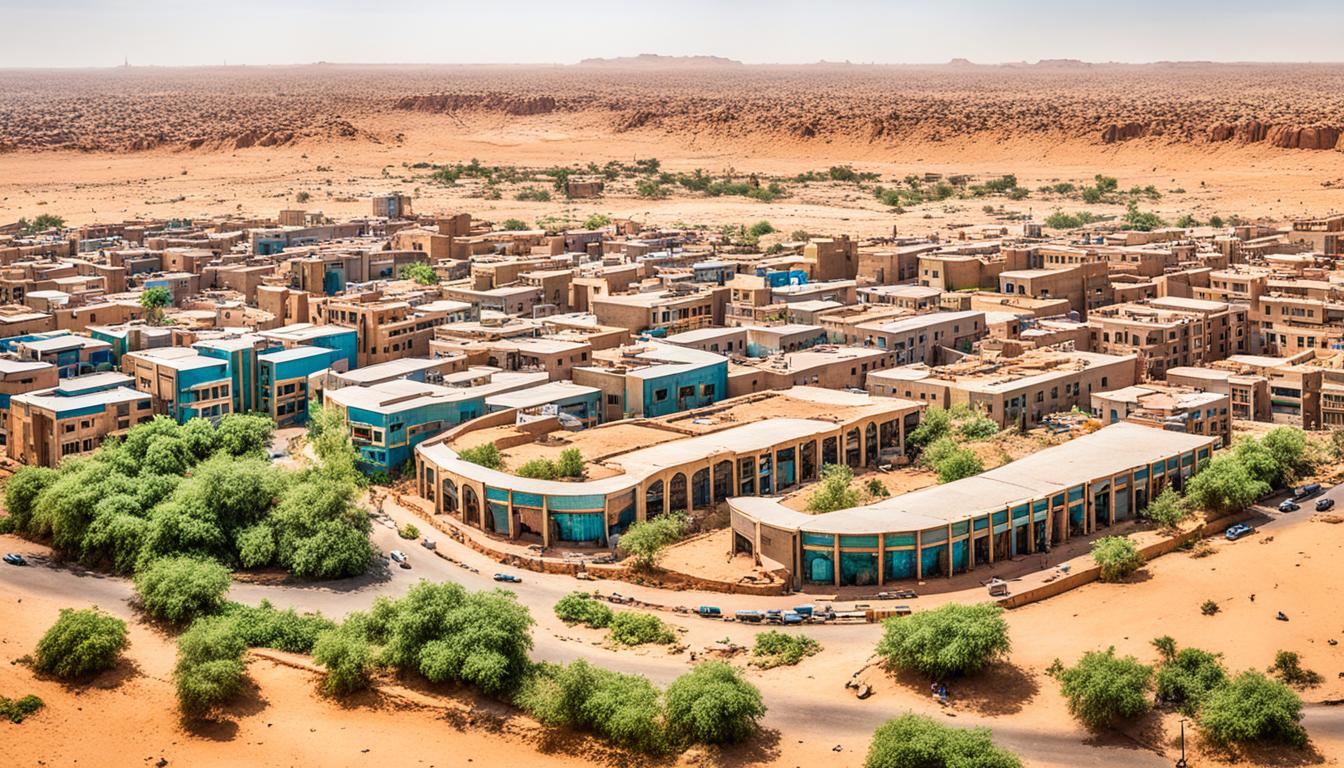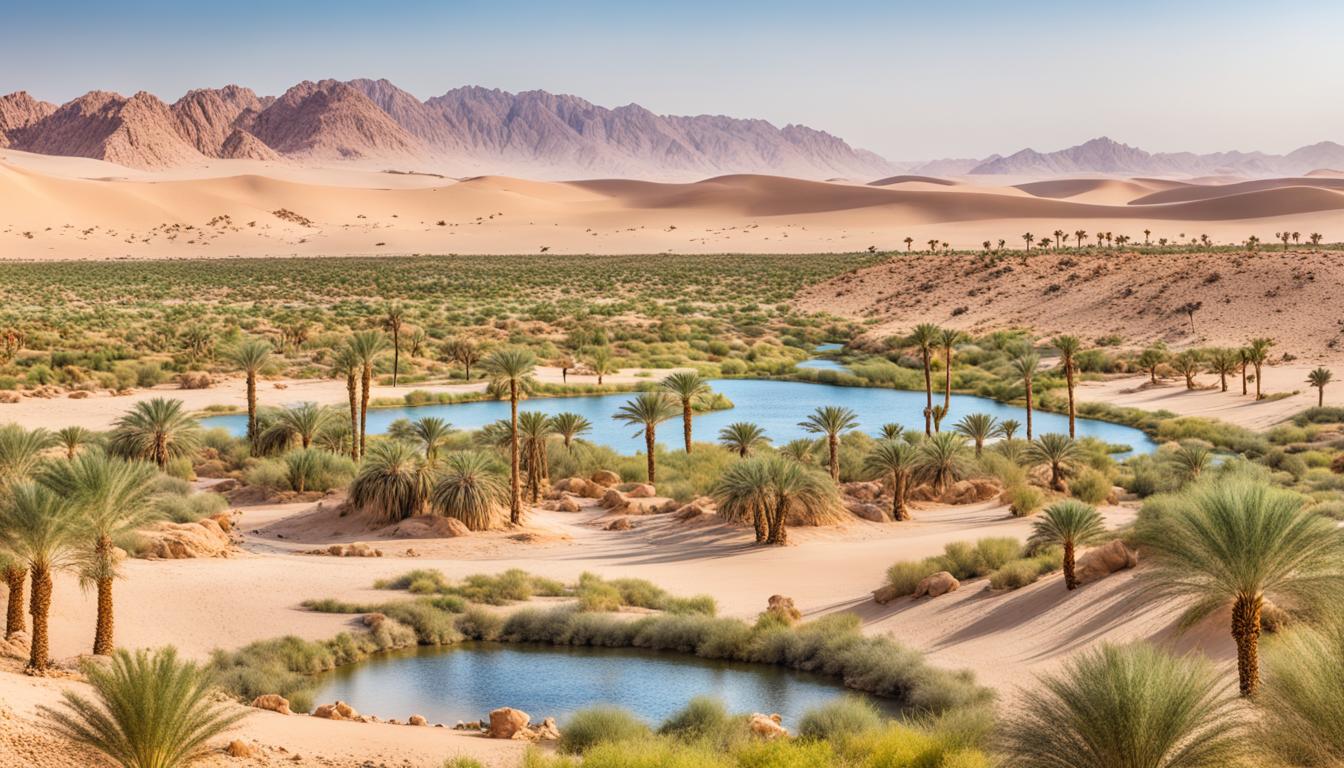Sri Lanka Biodiversity and the Built Environment
Sri Lanka is a country known for its incredible biodiversity and stunning natural landscapes. With over 3,300 species of flowering plants, 400 species of birds, and 240 species of butterflies, Sri Lanka’s flora and fauna are truly exceptional. However, the rapid urban development and the increasing demand for infrastructure pose significant threats to this rich biodiversity.
It is crucial to strike a balance between development and conservation to ensure the sustainability of Sri Lanka’s natural heritage. The preservation of its biodiversity and the integration of eco-friendly practices into urban development are essential for a greener future.
Key Takeaways:
- Sri Lanka is home to diverse flora and fauna, with thousands of species.
- Urban development poses a threat to the country’s biodiversity.
- Conservation efforts are vital to protect Sri Lanka’s natural heritage.
- Eco-friendly practices should be integrated into urban development.
- Sustainable approaches are needed for a greener future.
The Importance of Sri Lanka’s Biodiversity
Sri Lanka is renowned for its rich biodiversity, hosting a wide variety of plants and animals. The country’s unique ecosystems, including forests, grasslands, wetlands, and coral reefs, contribute to its exceptional biodiversity. Sri Lanka is also home to numerous endemic species found nowhere else in the world, highlighting the importance of preserving its flora and fauna.
The diverse flora and fauna of Sri Lanka play a crucial role in maintaining ecological balance and providing various ecosystem services. The lush forests not only provide habitats for wildlife but also help regulate the climate and purify the air we breathe. The wetlands act as natural filters, purifying water and preventing floods. The unique coral reefs support marine life, displaying a stunning underwater world.
Preserving Sri Lanka’s biodiversity is not only important for its intrinsic value but also for its contribution to various sectors such as tourism, agriculture, and medicine. The country’s unique ecosystems and endemic species attract nature enthusiasts and researchers from around the world, boosting eco-tourism and scientific exploration. Furthermore, traditional medicines and agricultural practices in Sri Lanka heavily rely on the country’s rich biodiversity.
Protecting Sri Lanka’s flora and fauna also ensures the continued existence of numerous endemic species. These species have evolved and adapted to the specific environmental conditions of the island, making them irreplaceable and invaluable. Endemic species are often indicators of the overall health and well-being of an ecosystem, and their loss can have cascading effects on the entire ecosystem.
The Role of Unique Ecosystems
Sri Lanka’s unique ecosystems are hotspots of biodiversity, supporting a myriad of specialized plant and animal species. The dense forests provide shelter to the elusive Sri Lankan leopard and the endangered purple-faced langur. The wetlands harbor a range of bird species, including the rare Sri Lanka frogmouth and the charismatic painted stork. The coral reefs are home to vibrant marine life, including numerous species of tropical fish and coral.
Each of these ecosystems is delicately interconnected, forming a complex web of life. By preserving these ecosystems, we safeguard the biodiversity they support and contribute to a healthier planet. Sri Lanka’s unique ecosystems are not only a national treasure but also a global heritage that must be conserved for future generations.
The Importance of Endemic Species
Sri Lanka’s endemic species are of significant global importance. These species have evolved in isolation, adapting to the specific environmental conditions of the island. They possess unique genetic traits and ecological roles that cannot be replicated elsewhere. Protecting and preserving these endemic species is crucial for maintaining the overall biodiversity and ecological balance of Sri Lanka.
Endemic species also contribute to scientific research and discovery. Studying these species allows us to gain insights into evolution, adaptation, and ecological processes. The knowledge gained from studying endemic species can be applied to global conservation efforts and help mitigate the loss of biodiversity worldwide.
| Importance of Sri Lanka’s Biodiversity | Key Points |
|---|---|
| Ecological Balance | Sri Lanka’s biodiversity ensures the functioning of various ecosystems and the balance of ecological processes. |
| Tourism and Economy | The unique flora, fauna, and ecosystems attract tourists and contribute to the country’s economy. |
| Endemic Species | Preserving endemic species is crucial for their ecological roles and genetic diversity. |
| Scientific Research | Studying Sri Lanka’s biodiversity provides insights into evolution and ecological processes. |
The Flora and Fauna of Sri Lanka
Sri Lanka’s diverse climate, geography, and habitats make it a haven for a wide range of flora and fauna. The country boasts an impressive array of wildlife, including various mammals, reptiles, birds, and orchids.
Wildlife of Sri Lanka
One of the most iconic wildlife species in Sri Lanka is the Sri Lankan elephant. These majestic creatures can be found in national parks and protected areas across the country, such as Yala National Park and Udawalawe National Park. Another notable mammal is the elusive leopard, which roams the dense forests of Sri Lanka’s central highlands.
When it comes to reptiles, Sri Lanka is home to a diverse range of species. The country is known for its numerous snake species, including the venomous spectacled cobra and the python. Sri Lanka also has a variety of lizards, such as the green garden lizard and the endemic Sri Lankan horned lizard.
Sri Lanka’s avian population is equally impressive, with a wide variety of bird species found throughout the island. The Sinharaja Forest Reserve, a UNESCO World Heritage site, is a birdwatcher’s paradise. Here, bird enthusiasts can spot endemic species like the Sri Lanka blue magpie, Sri Lanka junglefowl, and Sri Lanka green pigeon.
Orchids and Plant Species
Sri Lanka’s flora is equally diverse and fascinating. The island is home to over 3,000 species of flowering plants, including a wide variety of orchids. The Horton Plains National Park is renowned for its stunning collection of orchids, with species like the endemic Sri Lankan Spider Orchid and the Nobile’s dipterocarpus in full bloom.
In addition to orchids, Sri Lanka boasts various other plant species that contribute to its rich biodiversity. The country’s rainforests are teeming with unique plant life, such as the tall and stately Dipterocarpus zeylanicus tree and the vibrant Nymphaea lotus, also known as the Sri Lankan blue water lily.
Sri Lanka’s diverse flora and fauna make it a paradise for both nature lovers and researchers. Its unique ecosystems and numerous endemic species highlight the importance of preserving this natural heritage for future generations.
| Wildlife | Plant Species |
|---|---|
| Mammals | Orchids |
| Reptiles | Flowering Plants |
| Birds | Trees |
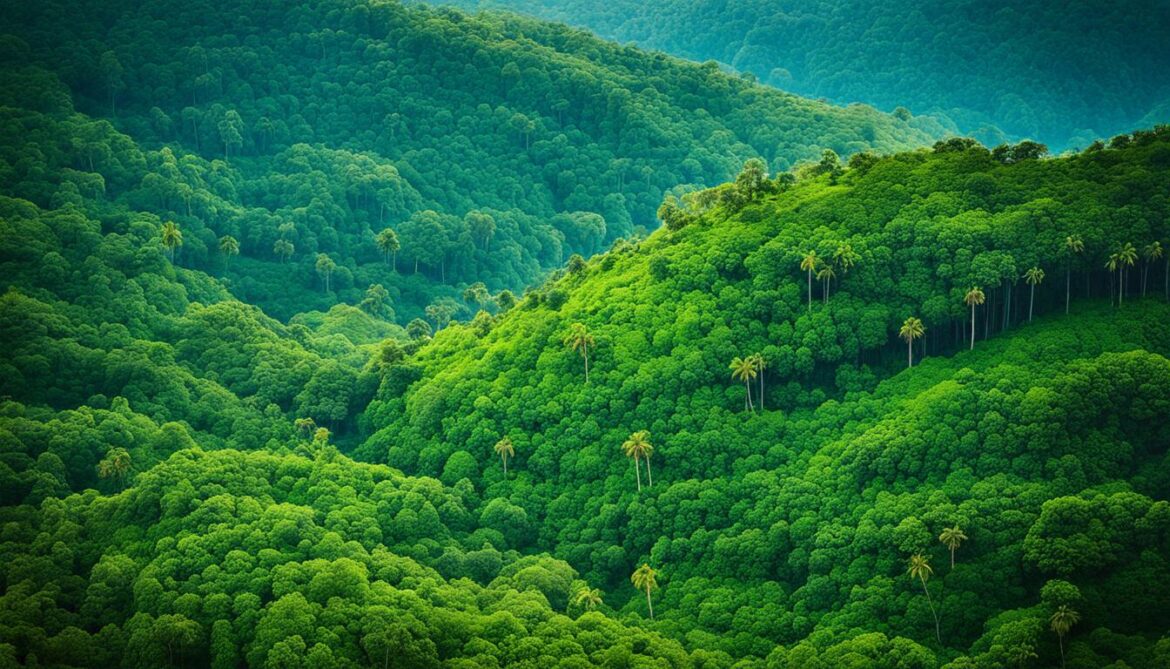
The Significance of Conservation
Conservation: Preserving Sri Lanka’s BiodiversityBy protecting endemic species and maintaining ecological balance, conservation efforts support sustainable development and ensure the long-term conservation of Sri Lanka’s natural heritage. Conservation is the cornerstone of safeguarding Sri Lanka’s biodiversity, preserving its unique ecosystems, and protecting the country’s diverse flora and fauna. By taking proactive measures to protect endemic species and maintain ecological balance, conservation efforts contribute to the overall sustainable development of the nation. Biodiversity Protection: Conservation plays a crucial role in safeguarding the rich biodiversity of Sri Lanka. It aims to protect the various species of plants and animals that inhabit the country’s forests, wetlands, grasslands, and marine ecosystems. By preserving these natural habitats and their delicate ecological balance, conservation efforts ensure the survival of numerous species and maintain the intricate web of life. Ecological Balance: Maintaining ecological balance is essential for the sustainability of Sri Lanka’s ecosystems. Conservation efforts focus on preventing the loss of keystone species and protecting the intricate relationships between different organisms. By doing so, they help promote the health and resilience of ecosystems, ensuring their ability to provide vital ecosystem services and support human well-being. Sustainable Development: Conservation and sustainable development go hand in hand. By protecting ecosystems and their biodiversity, conservation efforts pave the way for sustainable economic growth. For instance, eco-tourism, one of the key components of sustainable development, allows visitors to experience Sri Lanka’s unique flora and fauna while supporting local communities and environmental preservation. |
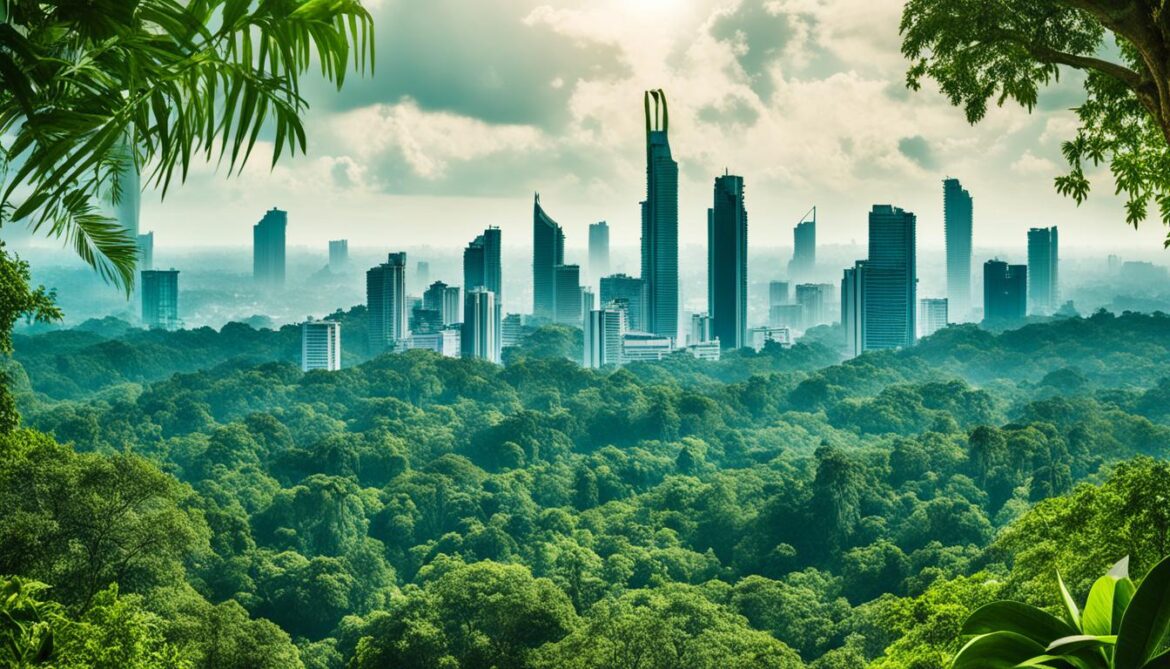 |
|---|
The Role of Education and Awareness
Educating the public and raising awareness about biodiversity conservation is vital for the sustainable future of Sri Lanka’s unique flora and fauna. By promoting environmental stewardship and sustainable practices, individuals and communities can actively contribute to the preservation of Sri Lanka’s rich biodiversity.
Education plays a crucial role in fostering a sense of responsibility and understanding among the general public. Teaching people about the value of biodiversity and the importance of conserving it creates a foundation for positive change. It empowers individuals to make informed decisions and take actions that align with sustainable practices.
Awareness programs inspire people to appreciate the incredible diversity of Sri Lanka’s natural heritage and the threats it faces. By engaging communities through events, workshops, and campaigns, we can encourage a collective sense of responsibility towards conservation. By highlighting the interconnectedness between human activities and the environment, we can inspire individuals to adopt sustainable practices in their daily lives.
Environmental stewardship emerges when education and awareness are combined. It refers to the responsible and ethical use of natural resources, considering the long-term impact of our actions. Through education and awareness, communities can develop a deep sense of environmental stewardship, actively working towards sustainable development and the protection of Sri Lanka’s flora and fauna.
Research and monitoring programs are also crucial in supporting biodiversity conservation efforts. By studying and documenting Sri Lanka’s diverse ecosystems, researchers can enhance our understanding of the species and their habitats. This knowledge helps identify key conservation areas, implement effective strategies, and monitor the success of conservation initiatives in preserving the country’s remarkable biodiversity.
Education and Awareness Initiatives in Sri Lanka
Sri Lanka has made significant strides in promoting education and awareness about biodiversity conservation. Various organizations, including NGOs and government agencies, have implemented initiatives aimed at engaging the public and fostering a sense of environmental responsibility.
One such initiative is the “Youth for Conservation” program, which targets young individuals and educates them about the importance of biodiversity and sustainable practices. Through interactive workshops and field trips, the program aims to inspire the younger generation to become advocates for environmental preservation.
In addition, numerous awareness campaigns and events, such as World Environment Day and Biodiversity Week, are organized throughout the year to engage communities and raise awareness about the significance of biodiversity conservation. These initiatives create platforms for dialogue, knowledge sharing, and collective action towards a sustainable future.
The Way Forward
To ensure the long-term protection of Sri Lanka’s biodiversity, it is crucial to continue investing in education, awareness, and research. By empowering individuals and communities with knowledge and fostering a deep sense of environmental stewardship, we can create a collective commitment to sustainable practices and conservation.
By strengthening research initiatives and monitoring programs, we can continue to enhance our understanding of Sri Lanka’s unique ecosystems. This knowledge will facilitate the design of effective conservation strategies and the identification of areas requiring urgent protection.
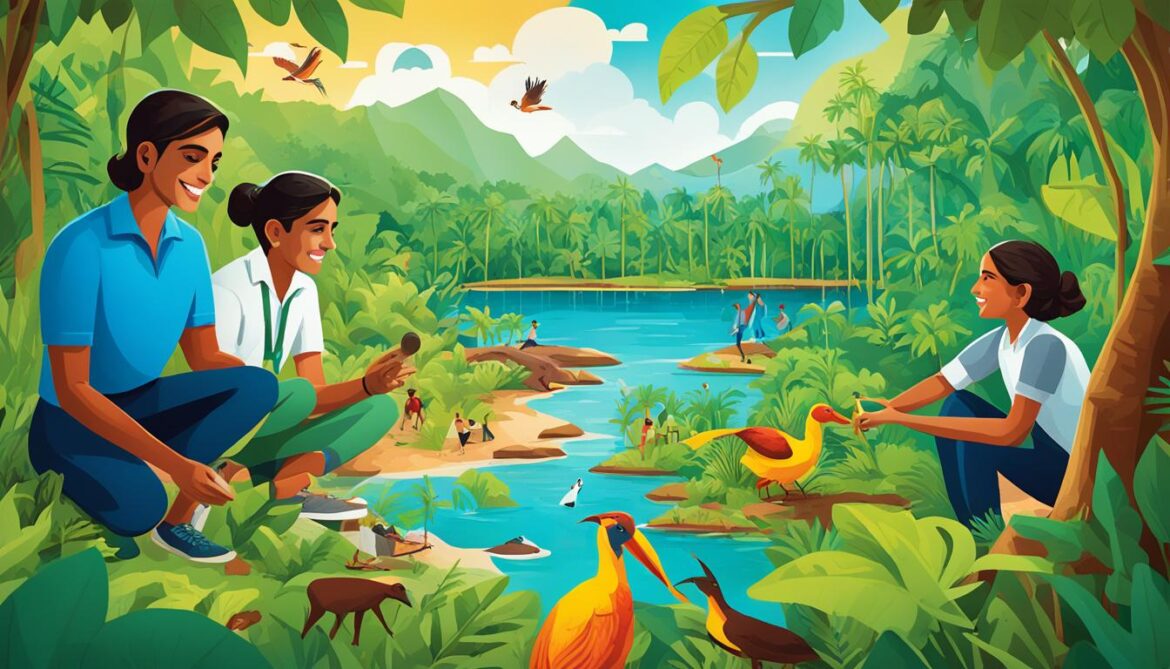
The Threats to Sri Lanka’s Biodiversity
Sri Lanka’s incredible biodiversity is facing significant threats that pose a risk to the survival of many species. These threats include:
Habitat Loss
The loss of natural habitats is one of the biggest threats to Sri Lanka’s biodiversity. Deforestation, urbanization, and agricultural expansion contribute to the destruction of vital habitats for plants and animals, leading to a decline in species populations.
Pollution
Pollution, including water pollution and air pollution, poses a serious threat to Sri Lanka’s biodiversity. Contaminants from industrial activities, agriculture, and improper waste disposal can harm ecosystems and disrupt the balance required for many species to thrive.
Overexploitation
Overexploitation of natural resources, such as timber, wildlife, and fish, is a significant threat to Sri Lanka’s biodiversity. Unsustainable practices, including illegal hunting and unsustainable fishing methods, can deplete populations and disrupt ecological interactions.
Invasive Species
Invasive species, both plant and animal, pose a major threat to Sri Lanka’s biodiversity. These non-native species can outcompete native species for resources, disrupt natural ecosystems, and even drive native species to extinction.
Climate Change
Climate change is a global threat that impacts Sri Lanka’s biodiversity. Rising temperatures, changing rainfall patterns, and sea-level rise can disrupt ecosystems and alter habitat conditions, challenging the survival of many species.
Immediate action is needed to address these threats and protect Sri Lanka’s unique flora and fauna. Conservation efforts, sustainable practices, and public awareness can help mitigate the impact of these threats and ensure a sustainable future for Sri Lanka’s biodiversity.
“The conservation of biodiversity is crucial to protect the delicate balance of life on our planet and safeguard the natural heritage of Sri Lanka for future generations.”
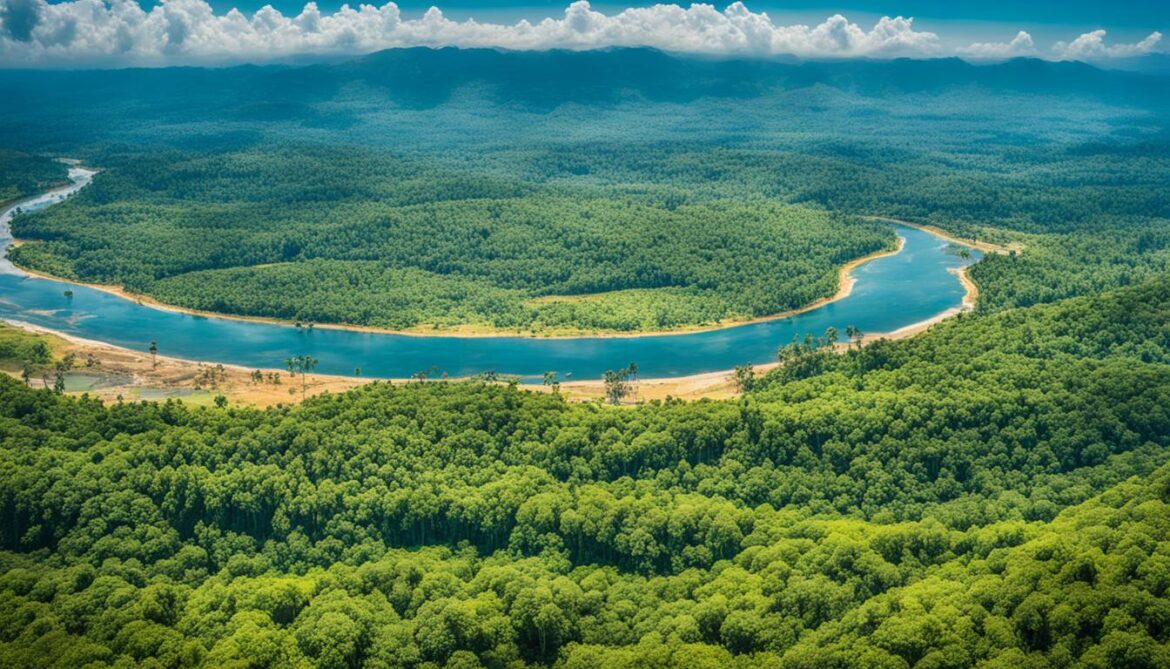
| Threats | Impact |
|---|---|
| Habitat Loss | Loss of natural habitats leads to declining species populations and reduced biodiversity. |
| Pollution | Contaminants harm ecosystems and disrupt the delicate balance required for many species to thrive. |
| Overexploitation | Unsustainable harvesting practices deplete resources and disrupt ecological interactions. |
| Invasive Species | Non-native species outcompete native species, disrupting natural ecosystems and driving native species towards extinction. |
| Climate Change | Rising temperatures, changing rainfall patterns, and sea-level rise challenge the survival of many species and alter habitat conditions. |
Unique Zones and Threats in Sri Lanka
Sri Lanka is home to unique zones that play a vital role in the conservation of various taxonomic groups. These zones have been identified for freshwater crabs, dragonflies, land snails, amphibians, reptiles, orchids, as well as marine and mangrove habitats. Within these zones, species found nowhere else in the world thrive, making their preservation crucial.
While each taxonomic group enjoys the protection of their unique zones, they also face specific threats that require targeted conservation strategies. For example, freshwater crabs are threatened by habitat loss due to urbanization and agricultural activities, while dragonflies face challenges from water pollution and habitat degradation.
The conservation strategies employed for these taxonomic groups focus on mitigating the threats they face. Efforts include habitat restoration, creating protected areas, and raising awareness about the importance of these species and their habitats. By implementing these strategies, Sri Lanka aims to ensure the long-term survival of its unique flora and fauna.
Conservation Efforts in Sri Lanka
Sri Lanka is committed to protecting its rich biodiversity through a range of conservation efforts. These initiatives aim to ensure the long-term sustainability of the country’s unique flora and fauna. By implementing various measures, Sri Lanka strives to safeguard its natural heritage for future generations.
Protected Areas
A key component of Sri Lanka’s conservation efforts is the creation of protected areas. These designated regions serve as sanctuaries for diverse ecosystems and endangered species. From national parks to nature reserves, these protected areas play a vital role in preserving the country’s biodiversity and providing habitats for a wide range of plant and animal species.
Collaboration between Government and NGOs
Collaboration between the government and non-governmental organizations (NGOs) is instrumental in driving conservation efforts in Sri Lanka. By working together, these entities bring together expertise, resources, and funding to implement effective conservation strategies. Joint initiatives focus on habitat restoration, wildlife protection, and community engagement to achieve sustainable conservation outcomes.
Research Programs
Research plays a crucial role in understanding Sri Lanka’s biodiversity and informing conservation efforts. Through scientific studies, researchers monitor species populations, map important habitats, and identify key factors affecting the ecosystem. Research programs provide valuable insights that guide conservation policies and help prioritize conservation actions.
“Conservation research is essential for addressing knowledge gaps, understanding the impacts of human activities on biodiversity, and developing effective conservation strategies.” – Dr. Samantha Perera, Conservation Biologist
By focusing on research, Sri Lanka ensures that conservation efforts are evidence-based and targeted towards the most critical areas of concern.

Measures to Enhance Implementation of the Convention
Sri Lanka is dedicated to preserving its rich biodiversity through a carefully crafted National Biodiversity Action Plan. This comprehensive plan encompasses various conservation objectives, research initiatives, education and awareness programs, and legal measures. By implementing these measures, Sri Lanka aims to enhance its conservation efforts and achieve the goals outlined in the Convention on Biological Diversity.
Conservation Objectives
The National Biodiversity Action Plan outlines specific conservation objectives aimed at safeguarding Sri Lanka’s unique flora and fauna. These objectives focus on protecting and restoring critical habitats, conserving endemic species, and mitigating the impact of human activities on biodiversity. By setting clear conservation targets, Sri Lanka ensures a strategic approach to preserving its natural heritage.
Research Initiatives
Research plays a pivotal role in understanding and protecting Sri Lanka’s biodiversity. The National Biodiversity Action Plan emphasizes the importance of research initiatives that support informed decision-making and conservation efforts. Through research projects, scientists and experts gain valuable insights into the ecological processes, threats, and conservation needs of Sri Lanka’s diverse ecosystems.
Education and Awareness Programs
Creating awareness and promoting environmental stewardship are crucial components of Sri Lanka’s conservation strategy. The National Biodiversity Action Plan includes extensive education and awareness programs targeting individuals, communities, and key stakeholders. These programs aim to instill a sense of responsibility and inspire sustainable practices that contribute to the preservation of biodiversity.
Legal Measures
Effective legal measures are essential for enforcing conservation policies and protecting biodiversity. Sri Lanka’s National Biodiversity Action Plan incorporates a robust framework of laws and regulations that govern activities impacting the environment. These legal measures serve as a deterrent to unsustainable practices while providing a legal basis for conservation efforts.
We have a responsibility to protect and conserve Sri Lanka’s rich biodiversity, not only for its intrinsic value but also for the well-being and prosperity of future generations.
Through the National Biodiversity Action Plan, Sri Lanka is committed to enhancing its conservation efforts. By pursuing conservation objectives, conducting vital research, promoting education and awareness, and implementing solid legal measures, Sri Lanka aspires to create a sustainable future that values and preserves its invaluable natural heritage.
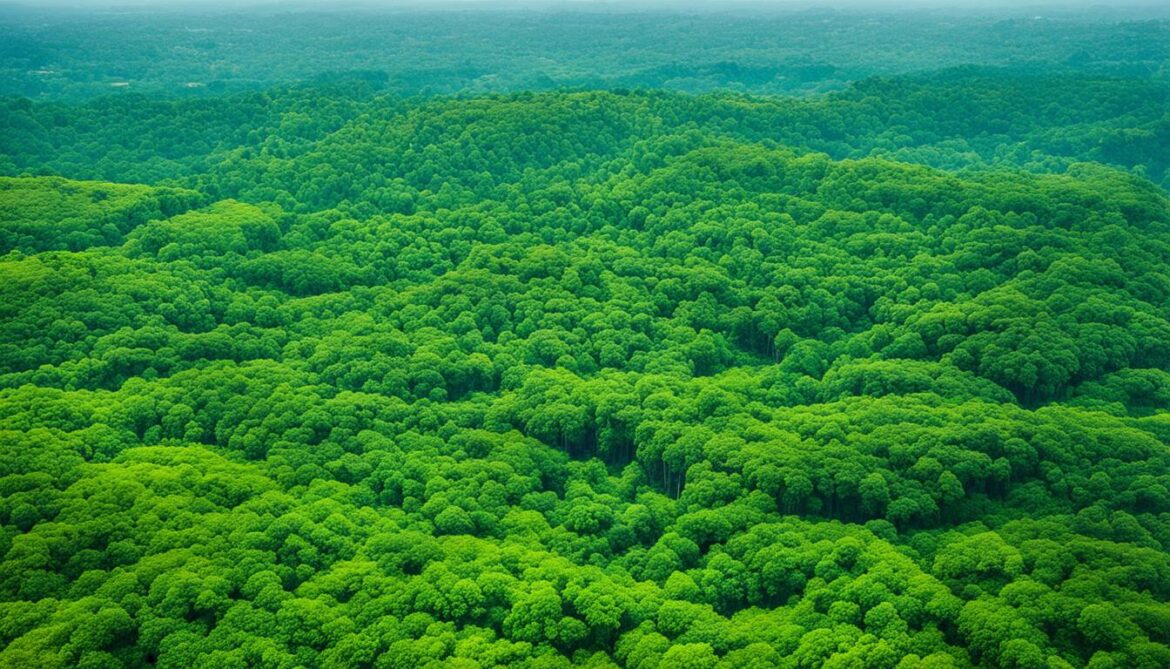
Actions Taken to Achieve the 2020 Aichi Biodiversity Targets
Sri Lanka has made significant efforts to achieve the 2020 Aichi Biodiversity Targets. The country has implemented various conservation projects to protect endangered species and preserve their natural habitats. Additionally, Sri Lanka has focused on ex situ conservation, which involves maintaining populations of threatened species outside of their natural environments.
Conservation projects in Sri Lanka aim to safeguard the genetic diversity of flora and fauna. By protecting species at risk of extinction, these projects contribute to the overall goal of maintaining a healthy and diverse ecosystem. Sri Lanka recognizes the importance of genetic diversity, especially in crops and medicinal plants, as it ensures the resilience of these species in the face of environmental changes.
An integral part of achieving the Aichi Biodiversity Targets is the preservation of genetic diversity. Through careful management and conservation practices, Sri Lanka is taking proactive steps to protect the genetic resources of its unique flora and fauna. This includes initiatives to conserve and sustainably utilize indigenous plant varieties and animal breeds, helping to maintain their genetic diversity for future generations.
In addition to conservation efforts, Sri Lanka actively participates in international collaborations and partnerships to further its biodiversity conservation agenda. By working with governments, non-governmental organizations (NGOs), and research institutions around the world, Sri Lanka can share knowledge and best practices in biodiversity conservation and implement effective strategies to achieve the Aichi Biodiversity Targets.
“The conservation of genetic diversity is crucial for the long-term survival of species and the overall health of ecosystems.”
Sri Lanka’s Conservation Projects
| Conservation Projects | Description |
|---|---|
| Protected Areas | Sri Lanka has designated protected areas to preserve critical habitats for numerous species. These areas serve as sanctuaries and provide a safe haven for plants and animals. |
| Species Recovery Programs | The country has initiated programs focused on recovering and increasing the population of endangered species, ensuring their survival and contributing to overall biodiversity conservation. |
| Habitat Restoration | Efforts are underway to restore degraded habitats and create ecological corridors, enhancing connectivity between fragmented ecosystems and promoting biodiversity conservation. |
| Community Engagement | Community-based conservation projects encourage local communities to actively participate in the protection and management of natural resources, fostering a sense of environmental stewardship. |
In conclusion, Sri Lanka’s actions toward achieving the 2020 Aichi Biodiversity Targets include the implementation of conservation projects, focusing on ex situ conservation and preserving genetic diversity. Through these efforts, Sri Lanka is making significant progress in safeguarding the precious flora and fauna that make the country’s biodiversity unique.

Conclusion
Sri Lanka’s biodiversity is a priceless treasure that warrants immediate conservation action. The country faces myriad threats to its flora and fauna, including habitat loss, pollution, overexploitation, invasive species, and climate change. However, through collaborative efforts from the government, non-governmental organizations (NGOs), researchers, and local communities, there is hope for protecting and preserving Sri Lanka’s unique biodiversity for a sustainable future.
Biodiversity conservation plays a crucial role in maintaining the delicate balance of ecosystems and ensuring the long-term viability of species. By implementing effective conservation strategies, such as creating protected areas, supporting research initiatives, and promoting education and awareness, Sri Lanka can mitigate the threats faced by its diverse flora and fauna.
A sustainable future for Sri Lanka’s biodiversity is within reach. By recognizing the importance of conservation, addressing the threats, and fostering collaboration among various stakeholders, the country can safeguard its natural heritage for future generations to enjoy. Together, we can build a sustainable and eco-friendly Sri Lanka that values and protects its precious biodiversity.





